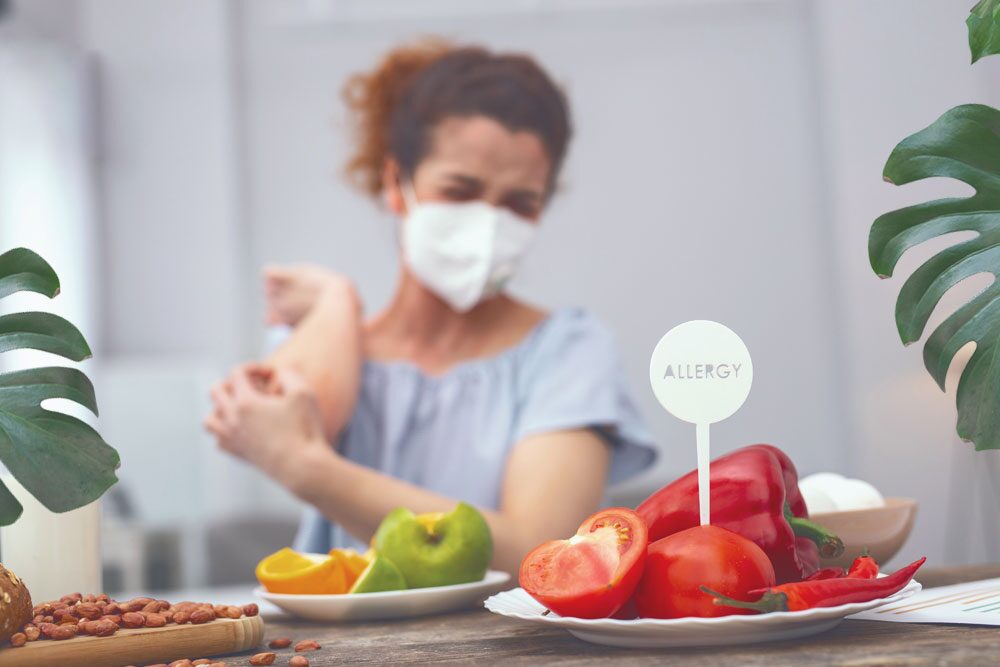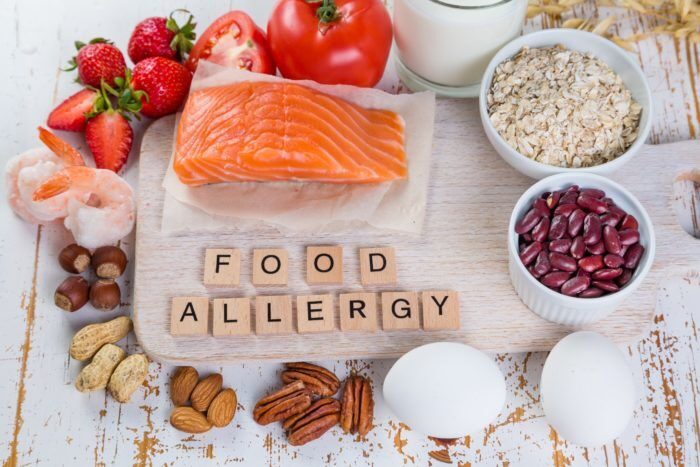Discover how to master allergen-free cooking with our ultimate guide. Learn tips, substitutions, and recipes that make conquering culinary challenges both healthy and delicious.
Introduction: The Rise of Allergen-Free Cooking
In recent years, the demand for allergen-free meals has surged, with more families recognizing the need to adapt recipes to suit food sensitivities. Whether it’s dairy, gluten, nuts, or soy, preparing meals that avoid common allergens doesn’t have to be a daunting task. In fact, conquering culinary challenges: a guide to delicious allergen-free cooking aims to show you how easy, enjoyable, and tasty this journey can be.
Understanding Food Allergies and Sensitivities

What Are Food Allergies?
Food allergies occur when the immune system mistakenly identifies certain proteins in food as harmful. The reaction can range from mild irritation to severe anaphylaxis. Common food allergens include:
- Milk
- Eggs
- Peanuts
- Tree nuts
- Soy
- Wheat
- Fish
- Shellfish
Understanding these allergens is the first step in creating a safe kitchen environment for everyone.
Distinguishing Allergies from Intolerances
Unlike allergies, food intolerances don’t trigger the immune system. They usually cause digestive issues and discomfort. Lactose intolerance, for example, results from the body’s inability to break down lactose.
Here’s a quick comparison:
| Category | Food Allergy | Food Intolerance |
|---|---|---|
| Immune Response | Yes | No |
| Symptoms | Hives, swelling, anaphylaxis | Bloating, gas, stomach cramps |
| Onset | Immediate | Gradual |
| Trigger Amount | Tiny traces | Larger quantities |
Stocking an Allergen-Free Kitchen
Creating an allergen-safe space begins with thoughtful planning. Removing or separating allergen-containing foods is vital to preventing cross-contamination. Below are key elements to consider when designing an allergen-free kitchen:
Key Ingredients to Keep on Hand
- Dairy Alternatives: Almond milk (for nut-safe kitchens, consider oat or rice milk), coconut yogurt, vegan cheese
- Flour Substitutes: Almond flour, chickpea flour, rice flour, gluten-free baking mixes
- Protein Sources: Lentils, quinoa, tofu (for soy-tolerant diets), beans, seeds
- Binding Agents: Flaxseed meal, chia seeds, psyllium husk
- Sweeteners: Maple syrup, agave nectar, stevia
By maintaining a well-stocked pantry of allergen-free basics, home cooks can quickly whip up safe, satisfying meals without sacrificing flavor.
Smart Substitutions in Allergen-Free Recipes

How to Replace Common Allergens
One of the best ways to conquer culinary challenges is mastering substitutions. These swaps allow you to recreate favorite dishes in a safer format:
Dairy Substitutes
- Milk → Oat, coconut, or hemp milk
- Butter → Coconut oil, avocado, or vegan margarine
- Cheese → Nutritional yeast, cashew cheese (for nut-tolerant diets)
Egg Replacements
- 1 egg = 1 tbsp ground flaxseed + 3 tbsp water
- Mashed banana or applesauce also works in baked goods
Gluten-Free Swaps
- Wheat flour → Brown rice flour, sorghum flour, or certified gluten-free oats
- Pasta → Lentil pasta, chickpea pasta, or spiralized vegetables
Learning these substitutions makes conquering culinary challenges: a guide to delicious allergen-free cooking an empowering process for both beginners and seasoned chefs.
Allergen-Free Meal Planning Tips
Weekly Planning for Safe and Balanced Nutrition
Meal planning helps streamline shopping and cooking while ensuring balanced nutrition. Here’s a simple weekly strategy:
- Plan for Variety – Rotate grains, proteins, and veggies to avoid repetition.
- Prep in Batches – Cook grains and legumes in advance.
- Label Everything – Use clear labels for allergen-free and allergen-containing items.
- Use Separate Utensils – Avoid cross-contamination by dedicating utensils, boards, and storage containers.
Delicious Allergen-Free Recipes to Try
1. Creamy Vegan Mac & “Cheese”
- Ingredients: Gluten-free pasta, nutritional yeast, oat milk, garlic, turmeric, lemon juice
- Instructions: Cook pasta, blend sauce ingredients, mix and warm together
2. Nut-Free Energy Bites
- Ingredients: Sunflower seed butter, rolled oats (gluten-free), maple syrup, chia seeds
- Instructions: Mix, roll into balls, refrigerate
3. Dairy-Free Banana Pancakes
- Ingredients: Mashed banana, oat milk, rice flour, baking powder
- Instructions: Combine, cook on a non-stick skillet, and serve with agave syrup
These recipes prove that delicious allergen-free cooking can be as indulgent and satisfying as traditional meals.
Eating Out and Traveling with Food Allergies
Dining out or traveling doesn’t have to be stressful. Here are a few ways to stay safe and enjoy your experience:
Before You Go
- Call the restaurant ahead to discuss dietary needs
- Pack safe snacks in case no suitable options are available
- Learn key allergy phrases if traveling abroad
At the Table
- Clearly communicate your allergens to the server
- Avoid buffet-style dining where cross-contact is common
- When in doubt, skip the dish
Being proactive is essential for safely navigating meals away from home.
Navigating Allergen-Free Cooking for Kids
Cooking for children with food allergies adds another layer of care. Kids may feel isolated if they can’t enjoy the same treats as their peers. To help:

- Involve them in the kitchen so they feel empowered
- Prepare allergen-free versions of their favorite snacks
- Educate them on what to avoid in a fun, non-scary way
Creating a positive food environment helps children build healthy eating habits and confidence.
FAQs About Allergen-Free Cooking
Here are some helpful FAQs that go beyond the main content to add extra value:
- What is the best egg substitute for fluffy baked goods?
Aquafaba (chickpea water) works well for light, fluffy textures. - Can allergen-free cooking still meet daily nutritional needs?
Yes. Balanced allergen-free diets with diverse plant-based foods can be highly nutritious. - How do I manage multiple allergies in one kitchen?
Separate cookware, prep zones, and color-coded containers help maintain safety. - Are gluten-free and wheat-free the same?
Not always. Some wheat-free products may contain other gluten grains like barley or rye. - Is it safe to use store-bought sauces?
Only if they are clearly labeled allergen-free and you verify ingredients. - Can food allergies be outgrown?
Some, like milk or egg allergies, may be outgrown with time, while others persist lifelong. - What’s the best milk alternative for creamy recipes?
Coconut milk offers a rich, creamy texture ideal for sauces and soups. - Are there allergy-safe baking mixes?
Yes. Many brands offer mixes free of top allergens like Enjoy Life or Namaste. - Do allergen-free meals taste bland?
Not at all! Spices, herbs, and creative ingredients enhance flavor naturally. - Can I trust “allergen-friendly” restaurant menus?
Always double-check. Some “friendly” items may still pose a risk due to kitchen practices.
Conclusion: Embrace the Joy of Allergen-Free Cooking
Conquering culinary challenges: a guide to delicious allergen-free cooking is about more than removing ingredients—it’s about reimagining flavor, health, and inclusivity in the kitchen. By understanding allergies, embracing smart substitutions, and planning meals thoughtfully, you can create a welcoming food environment for all. With patience, creativity, and the right resources, allergen-free cooking becomes not only possible—but truly enjoyable.